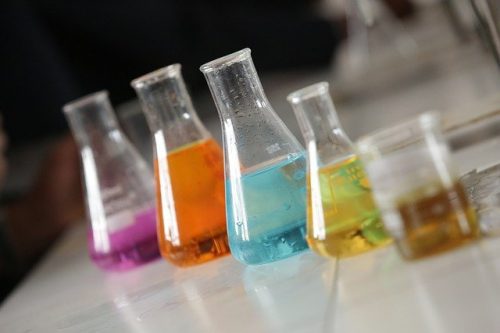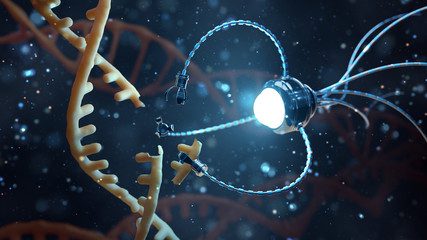Nanotechnology for Chemicals and Paints
Path leading towards advancement of novel industrial products.
Effective Materials in the chemical Industry give a particular advantage: Pharmaceuticals collaborate with microorganisms, structured polymers support mechanical pressure and paints give corrosion resistance.
Over the previous years nanotechnology has gotten increasingly more significant in the advancement of coatings. The analysts and businesses accepts that inside the following 10 years all throughout the planet around 20 % of the turnover of the branch will come from the utilization of nanotechnology, as supposed “Smart Coatings“
Industrial Benefits Through Nanotechnology
Nanoparticles, considered “another” word in the mid 2000, has become a traditional specialized term, part of standard instructing in colleges and very much incorporated in ordinary language. Nanoparticle research has discovered its situation as a perceived discipline, thus, we anticipate that the field should keep flourishing, with significantly more fuel as nanoparticles are currently internationally accessible to labs like our more customary compound reagents.
Nano-Coatings
![]()
In recent years modern techniques have been developed to visualize and scientifically describe nano-scale materials and structures. It is therefore now possible to tailor the manufacture and use of nanomaterials and nanostructures in the coating industry to the specific needs of the various applications
Pigments

Small, chemically inert particles have been prominently used in pigments, polymer fillers and surface finishing next to bulk applications such as ceramics. various carbon soot pigments in cave and pottery paintings and carefully reduced iron oxide colloids as red and yellow pigments.
Anti-UV Products

More recent advances in aerosol synthesis permitted manufacturing of nanoparticles. They permits strong optical effects and high color depth. After recognizing the estrogen-like activity of numerous organic sunscreen additives, inorganic UV absorbing pigments based on nanoparticles.
Antimicrobial Agents

The traditional use of certain metals against microorganisms has been known for several millennia. The possibility, however, to prepare metals in the form of very small particles, and reliably spread them over large consumer surfaces, has provided an astonishing revival in interest around these antimicrobial agents
“Nanomaterials can be modified to improve the overall characteristics of convectional materials because of their tiny size. Nanotechnology has also aided in the development of more efficient and long-lasting materials. Steel, glass, and nanotechnology-based coatings are used to protect the layers against corrosion.”

What nanotechnology is all about?
The thoughts and ideas driving Nano Science and nanotechnology began with a discussion named “There’s Plenty of Room at the Bottom” by physicist Richard Feynman at an American Physical Society meeting at the California Institute of Technology on December 29, 1959, some time before the term nanotechnology was utilized.
Future scope of Nanotechnology in Coatings & Paint Industry
Scratch – resistant
Nanopolymer coatings applied over car paint can reflect heat to regulate temperature and make air conditioners more fuel-efficient. Ceramic nanoparticles-infused paints can protect cars against minor scratches, and nanopolymer coatings applied over car paint can reflect heat to regulate temperature and make air conditioners more fuel-efficient.
ANTI- MICROBIAL
Antimicrobial, antifungal, and antibacterial biocides are predicted to become more common as buildings and industries are expanding. Biocides in paint inhibit the growth of fungus, algae, and bacteria, all of which may be highly damaging to painted surfaces therby providing an Anti-microbial coating to the surfaces.
WEATHER- RESISTANT
Any solvent’s chemical composition can be improved with nanomaterials. They are usually only applied in trace amounts to a coating substance. They may change a wide range of qualities in the coating material, such as flow behaviour, surface tension, gloss, structure, UV and weather resistance, and so on.
Who all are theBeneficiaries
Qualification | Subjects |
|---|---|
Under-Graduates (B. Sc., B. Tech., B.E) | Physics, Chemistry, Nanoscience & Technology, Materials Science, Metallurgy, Textile, Polymer. |
Post- Graduates (M. Sc., M. Tech, M.E) | Physics, Chemistry, Nanoscience & Technology, Materials Science, Metallurgy, Textile, Polymer. |
Industrial people/ Researchers/ Academicians | Any. |
Latest Research topics in Polymers and Chemicals sector
The latest trend in Chemical & Polymer is more about Smart Material, Sustainable Construction, and Energy Efficient Structures and thus, redefining their roles as Innovators.

A New Method to Create Luminescent Graphene
Graphene is more elastic than rubber, harder than a diamond, lighter than aluminium, tougher than steel, and tougher than steel. These are only a few of the characteristics of this amazing material, which is a great electrical and heat conductor.

Carbonitride Aerogels Facilitate Photocatalytic Conversion of Water
Researchers have developed a macroscopic aerogel made of carbonitride nanoparticles that is an excellent catalyst for the water-splitting reaction when exposed to visible light. The research, which was published in the journal Angewandte Chemie, opens up new possibilities for melamine-derived carbonitrides material characteristics.

Environmentally Friendly Method to Make Nanoclusters of Zinc Peroxide
A team of researchers from Aalto University in Finland developed anticancer nanomaterials by modelling the deep ocean’s dynamic chemistry caused by volcanoes.

Nanomaterial for Efficient Harvesting of Sunlight
Sunlight can be used more efficiently in the future with the use of nanomaterials to activate chemical reactions like artificial photosynthesis.

Simple Chemical Method Transforms Crystal Mixture
A team lead by experts at the Lawrence Berkeley National Laboratory (Berkeley Lab) of the US Department of Energy discovered a way to make a liquid-like condition behave more like a solid and then reverse the process.

Biomimetic Nanotechnology for Water Purification
Freshwater bodies have become unsuitable for drinking as a result of the industrial revolution, consequent pollution, and climate change. Various water treatment technologies have been developed to help with this issue.
Each Courses and its Modules are selectively developed to give best of real life and market knowledge.
Focused Courses
Well Researched Modules
Latest Knowledge
Industry & Skill Orientation


Essential Takeaways for Chemical & Polymer Engineering students:
- B. Tech students to have insights on what are the latest developments across globe
- M. Tech students can find interesting Research topics to work and solve Chemical & Polymer Industrial challenges
- Researchers can find better ways to handle mission critical research and develop path breaking products.
- Opportunity to write and Publish Research Project and Get Live Industry relevant challenges to work on.
Course Benefits:
Learn directly from experts
Ideal for Major/ Minor projects and dissertation
Self-Study Course Material.
Prepare Live Projects
Get to know real-time environmental Issues
Award Of Statement Of Marks
Learn the smarter way from home
Independent knowledge enhancement
Award Of Certificate

The Featured Projects
Project customized specially for Chemical & Polymer engineering stakeholders who wish to upgrade their skills as per industryrequirements.
- Synthesis of polymer coated Nanomaterials for specific applications
- Formulation of resin based Graphene coatings for anti corrosion applications
- Identification of as prepared silica nanostructures from chemical and solid state synthesis.
- Study of Sio2 based aqueous dispersion and the effect of PH on the formulations.
- To study the effect of various synthesis method on the size of as prepared Cu nanostructures.
- Synthesis and Characterization of TiO2 Nanoparticles for the Reduction of Water Pollutants
- Synthesis, Characterization and Photocatalytic efficacy of Carbon nanotube-TiO2 nano-hybrid for Enhanced Hydrogen Production under Solar irradiation
- Modifications of pure and Ag doped TiO2 by pre-sulphated and calcination temperature treatments.
- Synthesis of zinc oxide nanoparticles with different morphologies by wet chemistry routes.
- Selective TiO2-based enrichment methods for analyzing phospho-peptide content of small- size complex samples
- A method for coating glass beads with TiO2 and comparison of photocatalytic effectiveness for contaminant degradation.
- Synthesis and Characterization of Titania Photocatalyst Nano-particles of Controlled size and Shapes for waste water treatment.
Get started now!
Want to know more Projects ?
Some of the
Suggested Courses

Nanomaterial Production and Certification
The Program Nanotechnology in Waste to Nano-material Production & Industrial Certification is an advanced program meant to enhance the knowledge base of participants in the area of production of Nano-material from various waste products.![]()
Silicon Nanostructure & Carbon Nanotubes
The most of the innovation and funding in Nanotechnology research came from Electronics giants. Manufacturing and marketing of Nano gadgets started from the computers and mobiles which are the only machines made at Nano scale that were available economically.
Industry Program In Nanotechnology
The industry level program is an advanced program meant to enhance the knowledge base of participants who have a very basic knowledge of Nanotechnology. It equips the participant to be able to understand the practical and business aspects of various Nanotechnology techniques and materials from the point of view of the industry.
Sign up now!
and get instant access to your “Free Course”

